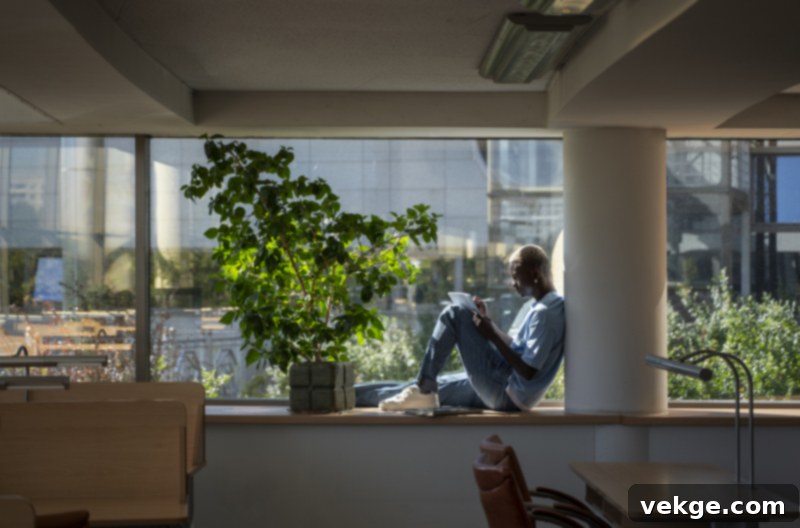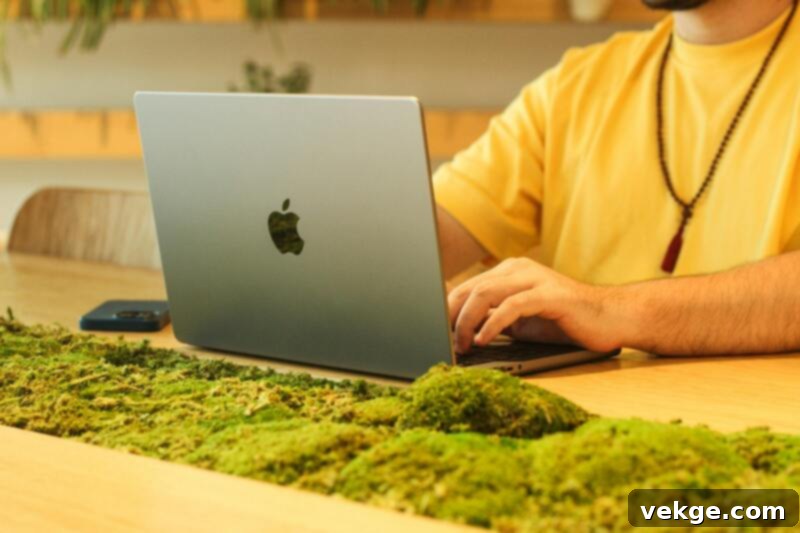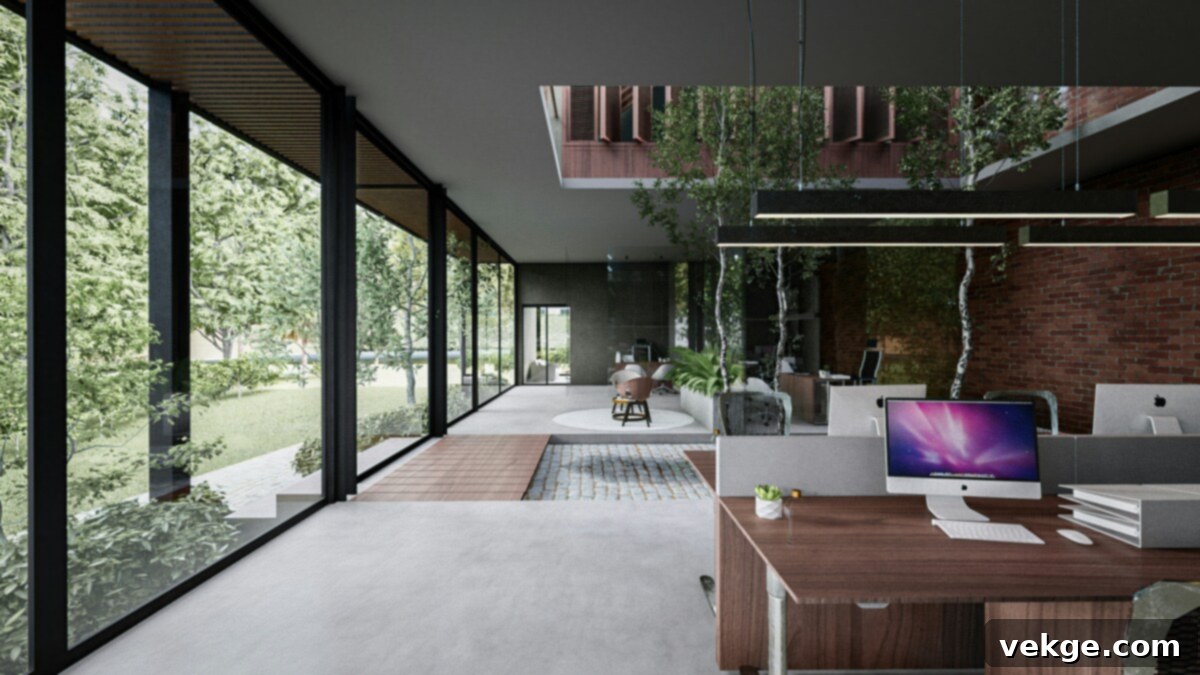Transform Your Workplace: The Unrivaled Benefits of Biophilic Office Design for Well-being and Productivity
In a world increasingly dominated by concrete jungles and digital screens, the innate human connection to nature, known as biophilia, is more vital than ever. It’s a fundamental truth that green spaces invigorate our senses, uplift our spirits, and even enhance our physical health. This understanding has paved the way for the burgeoning biophilic design trend, especially within commercial and office environments. Moving beyond a simple potted plant, biophilic design integrates natural elements into the built environment to foster a profound sense of connection to the natural world. This isn’t just about aesthetics; it’s a strategic approach to creating healthier, more productive, and more inspiring workspaces.
The concept, popularized by biologist Edward O. Wilson, posits that humans have an evolutionary need to connect with other forms of life. When we deny this connection in our daily environments, particularly our workplaces where we spend a significant portion of our lives, we inadvertently undermine our well-being. By thoughtfully weaving nature’s patterns, materials, and direct presence into office spaces, businesses can unlock a myriad of benefits. Let’s delve into the transformative power of implementing biophilic design within your office, exploring how it can impact everything from individual well-being to organizational success.
Elevating Mental Health and Cognitive Function
The immediate and most palpable benefit of biophilic design lies in its profound impact on mental well-being. You don’t necessarily need a sprawling living wall or massive indoor palms to initiate this change, although they certainly amplify the effect. Even the strategic placement of an artificial green wall can dramatically alter the ambiance and, crucially, your employees’ psychological state. The mere visual presence of greenery creates an illusion of being outdoors, fostering a sense of calm and reducing the psychological toll of an enclosed, artificial environment. This mental shift directly translates to reduced stress and anxiety levels, promoting greater relaxation and overall happiness among staff.
Imagine your desk positioned near a window offering a panoramic view of a lush green field – a luxury few urban office dwellers experience. More often, the view consists of a parking lot, bustling traffic, or an endless array of identical buildings. A biophilic element, like a well-designed green wall, serves as a vital counterpoint to this urban monotony. It acts as a mental ‘escape hatch,’ allowing the mind to momentarily disengage from demanding tasks and reconnect with something inherently soothing. This deep sense of connection to nature, even when physically confined within four walls, significantly alleviates the burnout often induced by relentless artificial lighting, constant HVAC hum, and the lack of natural stimuli. Studies consistently show that exposure to natural elements can reduce cortisol levels, enhance mood, and improve cognitive functions like focus and memory, directly contributing to increased productivity and a more positive work environment.
Tangible Physical Health Improvements
Beyond its psychological benefits, biophilic design also plays a critical role in enhancing the physical health of office occupants. One of its most celebrated attributes is its capacity to purify and refresh indoor air, simultaneously reducing the prevalence of various pollutants. In offices situated within dense business districts, the air quality can often be a silent adversary, contributing to fatigue and a general sense of malaise. Integrating living plants strategically into the workspace actively works to combat this. Plants are natural air filters; they absorb carbon dioxide and harmful volatile organic compounds (VOCs) like formaldehyde, benzene, and trichloroethylene, while releasing oxygen. This natural biofiltration system drastically improves the quality of the air breathed by employees, leading to less fatigue, fewer headaches, and an overall feeling of vitality.
Furthermore, plants are adept at regulating humidity levels within enclosed spaces. In air-conditioned environments, low humidity can lead to dry eyes, irritated skin, and increased susceptibility to respiratory infections. By releasing moisture through transpiration, plants help maintain optimal humidity, creating a more comfortable and healthier atmosphere. This improved air quality has a direct positive correlation with a stronger immune system. When employees are breathing cleaner, better-humidified air, they are less prone to common illnesses. The result is a workforce that is not only happier and healthier but also less likely to call in sick, benefiting both the individual and the company through reduced absenteeism and increased work continuity. It’s a holistic improvement that touches every aspect of physical well-being in the workplace.

Strategic Benefits for Your Business
Implementing biophilic elements, whether living or artificial, into your office design transcends mere mental and physical benefits for employees; it delivers significant strategic advantages directly to your business’s bottom line and brand image. This forward-thinking approach is an investment that yields substantial returns across multiple facets of your operation.
Boosting Creativity and Innovation
Exposure to nature has long been known to stimulate the human brain, fostering a state of mind conducive to divergent thinking and problem-solving. When employees feel happy, relaxed, and connected to their environment, their cognitive functions are enhanced, directly translating into higher creativity and innovative output. Biophilic design elements such as living walls, artificial plant installations, natural water features, and the incorporation of natural materials like wood and stone create novel, inspiring environments. These settings actively encourage new perspectives and ideas, moving away from the sterile, often monotonous traditional office aesthetic.
Moreover, a workplace that promotes well-being through biophilic design naturally encourages greater collaboration and teamwork. People are more inclined to share ideas and work together when they feel comfortable and inspired by their surroundings. Whether it’s a casual brainstorming session in a plant-filled corner or a formal conference in a room featuring a stunning green backdrop, the natural elements provide an invigorating atmosphere for innovation. Even in the age of remote work, leafy backdrops in virtual meeting spaces can replace bland, blank walls, subtly infusing energy and a sense of connection into digital interactions, making them more engaging and less fatiguing.
Attracting and Retaining Top Talent
In today’s competitive talent market, businesses are constantly seeking unique ways to attract and retain high-caliber employees. While traditional benefits like financial incentives, health insurance, or flexible work hours remain important, a growing number of professionals, particularly younger generations, prioritize overall well-being, work-life balance, and an inspiring work environment. Many managers overlook the profound impact that seemingly ‘small’ improvements can make.
In an era where personal well-being is a paramount concern, a beautifully integrated biophilic design can be a significant differentiator. It signals to prospective and current employees that the company genuinely cares about their health, happiness, and overall quality of life at work. While employees understand that such an investment doesn’t necessarily cost a fortune, they deeply appreciate these thoughtful touches that contribute to their well-being. A well-designed office that demonstrably prioritizes human well-being becomes an incredibly attractive feature, often tipping the scales when a candidate is choosing between job offers.
Existing employees also benefit immensely. It’s a tangible demonstration of employer support and commitment. Employees who feel valued and comfortable in their workspace are more likely to develop loyalty and stay with the company long-term. This drastically reduces turnover rates, saving businesses substantial costs associated with recruitment, onboarding, and training new talent. From a financial perspective, revamping your office with biophilic design elements doesn’t have to break the bank. Artificial plants offer a stunning visual effect and are perfect for allergy-sensitive spaces, while even a few real, strategically placed plants can bring significant health benefits. They are relatively inexpensive to acquire and require minimal maintenance, often less time than the administrative process of handling a resignation letter, making it a highly cost-effective investment in human capital.
Enhanced Productivity and Performance
The cumulative effect of improved mental and physical health, combined with a boosted creative environment, inevitably leads to significantly enhanced productivity and overall employee performance. When employees are less stressed, healthier, and more engaged, their ability to focus on tasks, make sound decisions, and maintain energy levels throughout the day improves dramatically. Biophilic elements help reduce cognitive fatigue, allowing individuals to sustain attention for longer periods and recover more quickly from demanding mental tasks. This translates directly into higher output, fewer errors, and a more dynamic work rhythm. Studies have consistently shown a correlation between access to nature in the workplace and increased task performance and job satisfaction. Furthermore, by reducing absenteeism due to improved health, biophilic design ensures a more consistent and present workforce, further bolstering productivity.

A Commitment to Environmental Stewardship
Beyond the internal benefits to employees and the business, integrating biophilic design into your office space serves as a powerful statement of your organization’s commitment to environmental responsibility. This impact extends beyond the office walls, influencing both your corporate image and the broader ecological footprint. By opting for sustainable materials, such as reclaimed wood, recycled content, or rapidly renewable resources, businesses can actively keep energy consumption under control during construction and operation, minimizing their environmental impact from the outset.
Biophilic design is also an effective way to promote urban biodiversity, even in a small way. Creating indoor green spaces, whether through living walls or potted plants, contributes to micro-ecosystems that support various forms of life and enrich the immediate environment. This thoughtful integration helps to reduce the ecological footprint of the building itself, making it a more harmonious part of its natural surroundings. Moreover, by visibly establishing a strong connection between your office and nature, you inspire the people around you – employees, clients, and visitors alike. Employees will feel a sense of pride and belonging to a team that actively champions environmental consciousness. This motivation often transcends the workplace, encouraging them to adopt more environmentally friendly behaviors in their personal lives, creating a ripple effect of positive ecological impact.
An office or workplace that actively promotes such a design philosophy stands to gain significantly in the long run. Case studies repeatedly demonstrate that companies with robust sustainability practices not only see an average of 19% higher employee satisfaction scores but also benefit from enhanced brand reputation and increased customer loyalty. It represents a minimal investment with far-reaching returns, benefiting your employees, your company’s financial health, your corporate image, and ultimately, the planet. Implementing key biophilic design elements doesn’t necessitate a lengthy, disruptive renovation. Often, a few carefully chosen elements can provide your office with a complete and impactful makeover, creating a noticeable difference in a relatively short period.
Implementing Biophilic Design in Your Office
Embarking on a biophilic transformation doesn’t require a complete overhaul or an exorbitant budget. The beauty of this design philosophy lies in its versatility and adaptability. Businesses can start small and scale up, integrating elements that best suit their space, culture, and financial resources. Here are some practical tips for incorporating biophilic design into your workplace:
- Maximize Natural Light: Prioritize natural light as much as possible. Arrange desks to benefit from window views, use sheer blinds instead of heavy curtains, and consider light tubes or skylights where feasible.
- Introduce Greenery: Start with potted plants. Research air-purifying plants like snake plants, ZZ plants, or peace lilies. For a larger impact, consider a living wall or a high-quality artificial green wall, which provides the visual benefits without the intense maintenance.
- Incorporate Natural Materials: Use wood, stone, cork, and wool in furniture, flooring, and decorative accents. These materials bring warmth, texture, and a sense of authenticity.
- Integrate Water Features: Small, tabletop water features or larger installations can add the calming sound of trickling water, enhancing relaxation and focus.
- Embrace Natural Patterns and Textures: Look for textiles, artwork, or wall coverings that feature organic shapes, fractals, or patterns found in nature. This can be subtle but effective.
- Create Connection to Views: Ensure that as many employees as possible have a view of the outdoors, even if it’s just a small patch of sky or a distant tree.
- Consider Biomorphic Forms: Design furniture and architectural elements with curved lines and organic shapes rather than harsh, straight angles.
- Temperature and Air Flow: Mimic natural airflow patterns where possible and maintain comfortable, naturally feeling temperatures.
Ultimately, integrating biophilic design into your office brings the restorative power of nature into workspaces where the air feels fresher, minds stay sharper, and teams grow stronger. This isn’t merely an interior design trend; it’s a strategic investment in human potential, nurturing both individual well-being and the collective health of our planet. The future of work, characterized by sustainability, wellness, and inspiration, truly breathes here.
